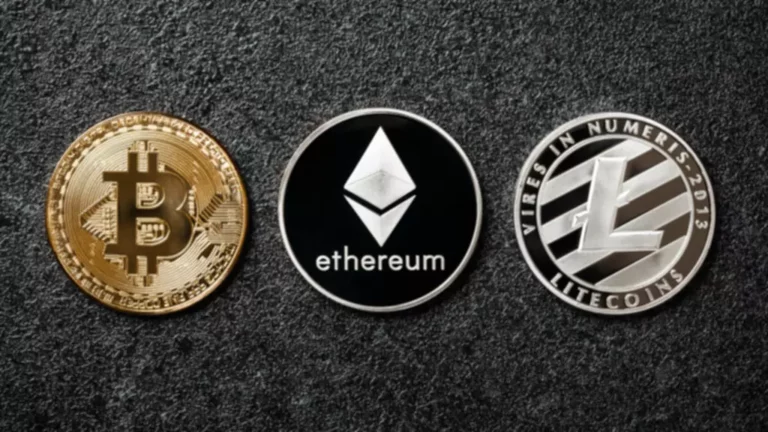Understanding Ethereum Network Fees for Beginners
Content
Under this fee structure, there were no minimum or maximum transaction costs—the price of gas was completely determined by supply and demand in the network at any given time. If network traffic unexpectedly increased, the price of gas would spike, causing transaction fees to Digital asset jump suddenly. This determines the maximum amount someone is willing to spend on a transaction. A higher gas limit means that more effort is required to execute that particular transaction or smart contract. Having a gas fee and a gas limit incentivises the developers to keep their smart contracts as simple and precise as possible.
Factors Determining Ethereum Wallet Transaction Costs

Learn how they’re empowering on-chain governance what are crypto gas fees and community participation. A beginner’s guide to Polkadot (DOT), the protocol that’s facilitating blockchain communication through interoperability. Centralized and decentralized exchanges are platforms for trading cryptocurrencies. MoonPay allows you to swap crypto cross-chain with competitive rates, directly from your non-custodial wallet.
Strategies to reduce gas costs:
The complexity of a transaction determines how much gas is needed to complete it, which determines https://www.xcritical.com/ how much gas is charged. The amount of gas a user is prepared to use during a transaction is known as the gas limit. One standard ETH transfer, for instance, has a gas limit of 21,000 units. The EVM will use 21,000 gas units and return the remaining 29,000 if a user specifies a gas limit of 50,000 for a simple ETH transfer. If a user inputs too little gas, the EVM will use up all of the gas on hand and undo any modifications; the user will not be reimbursed for their gas. Blocknative is here to help with our world-class mempool monitoring capabilities.
Where to Buy and Sell Rupiah Token ($IDRT)?
Additionally, ERC-4337 aims to improve gas estimation, which can help users avoid overpaying for gas. Ethereum developers are constantly working on scaling solutions to address the issue of high gas charges. These solutions aim to increase the network’s capacity to process transactions without compromising security. Anything less than this base fee makes the transaction ineligible to be processed on the blockchain. It’s important to note though that the London upgrade was not created to directly reduce gas costs on Ethereum.
Miners are incentivised to validate transactions before other miners in order to earn ETH from the gas fees. This congestion-based fee mechanism is known as the gas bidding system. Ethereum wallets calculate the appropriate fee based on the current network congestion and the desired transaction priority. EIP-1559 is an Ethereum Improvement Proposal that aims to make Ethereum transaction costs more predictable.
Gwei is also sometimes referred to as shannon, after the American mathematician and computer scientist Claude E. Shannon, who is credited with laying the foundation for information theory. EIP-4844 introduces a new type of transaction that can carry additional data called a “blob.” These blobs can hold up to 125 kb of information. Instead, they are cryptographically summarized using a technique called KZG commitments. A report by CoinDesk in February 2022 highlighted instances where gas fees reached record highs due to increased DeFi activity. The complexity of the impending transaction determines what amount of gas is required to perform the transaction.
It would also ensure that only Ether could be used to pay for transactions, cementing its value. With the current block gas limit set at roughly 10,000,000 gas, miners are less inclined to include transactions with high gas limits because it would waste part of the block gas limit. For these high gas transactions, much of it will usually get refunded by the miner. Ethereum’s switch to Proof-of-Stake promises to drive transaction costs down significantly. But until this shift is complete, developers and users alike have been identifying other ways of making the Ethereum ecosystem more affordable for users. The future of Ethereum holds the promise of reduced gas fees as scaling solutions continue to gain traction.
Once the transaction is validated, a group of several other ether holders verifies it. MoonPay Balances is a cheaper and faster way to purchase Ethereum (ETH) with higher approval rates. To get started, just top up your wallet in euros, pounds, or dollars and use your MoonPay Balance to purchase crypto like ETH. Plus, enjoy zero-fee withdrawals directly to your bank account when you decide to cash out. Ethereum will have 64 shard chains that will help significantly increase its scalability and transaction speed.
If there’s too much demand, users must offer higher tip amounts to try and outbid other users’ transactions. A higher tip can make it more likely that your transaction will get into the next block. Also, more complex smart contract apps might be doing lots of operations to support their functions, making them consume a lot of gas. First, you can choose times when the network is not so busy, a challenging endeavor but not impossible.
Whenever the amount of computation (gas) on Ethereum exceeds a certain threshold, gas fees begin to rise. The more the gas exceeds this threshold, the quicker gas fees increase. Gas fees represent the compensation paid to miners and stakers who help make Ethereum network transactions possible. Every type of instruction performed on the network has its own fixed price.

For Ethereum to work as a world computer, fees on the network need to be minuscule. As such, the way to pay for these transactions, Ether, also needs to be denominated in minuscule amounts. By using L2 scaling solutions like Arbitrum, dYdX, and Loopring, you can minimize your gas fee. Simply, they’re the pathway that allows users to send cryptocurrencies across different blockchains. It has not been rare for people to pay hundreds of dollars to execute simple swapping or buying transactions on Ethereum.
It’s important to consider your specific needs and usage patterns when deciding between software and hardware wallets to ensure maximum cost-efficiency for your crypto assets. When comparing Ethereum wallet fees across platforms, it’s important to consider the fee structures in popular wallets. Some wallets may charge a flat fee per transaction, while others may use a percentage-based fee. You can better understand the mechanics of Ethereum wallet fees by exploring the role that gas plays in Ethereum transactions.

Paying the right amount of gas for different activities on Ethereum involves setting a gas limit. This is an approximation of the total amount of gas it will take to fuel your transaction. Getting this amount right is no easy task, so most wallets and applications will set the Gas Limit for you. Typically, 21,000 Gas will satisfy most simple, wallet-to-wallet ETH transactions.
This can help you avoid high gas fees and ensure your transaction is processed efficiently. To pay for this computational cost in a fair way — since it has to be executed on all miners’ machines at once and they spend their resources and time on it — the concept of gas was introduced. Gas is used to pay for the execution of these so-called smart contracts (Ethereum programs) inside the EVM. For example, i + j above is a summation operation which costs 3 gas every time it’s executed, so 3000 gas if executed 1000 times. Before the implementation of the London Hard Fork, miners would receive all of the gas fees for each of the transactions they processed.
- We recommend ETH Gas Station for its intuitive interface and accuracy.
- Ethereum will have 64 shard chains that will help significantly increase its scalability and transaction speed.
- Ethereum, as a platform and system, is designed to be used by others to create more use cases for blockchain and cryptocurrency.
- This article explains what Ethereum gas fees are, why they can be expensive, and how you can pay lower fees.
- Please join our Discord Community if you have questions, concerns, or recommendations.Learn more about future upgrades to ETH via our Guide to The Ethereum Merge.
Like many stablecoins, $IDRT likely relies on a centralized authority to manage the reserves backing the token. A somewhat subtle nuance to the Max Priority Fee is that it represents the maximum tip you are willing to pay to a miner. However, if the Base Fee plus the Max Priority Fee exceeds the Max Fee (see below), the Max Priority Fee will be reduced in order to maintain the upper bound of the Max Fee.
